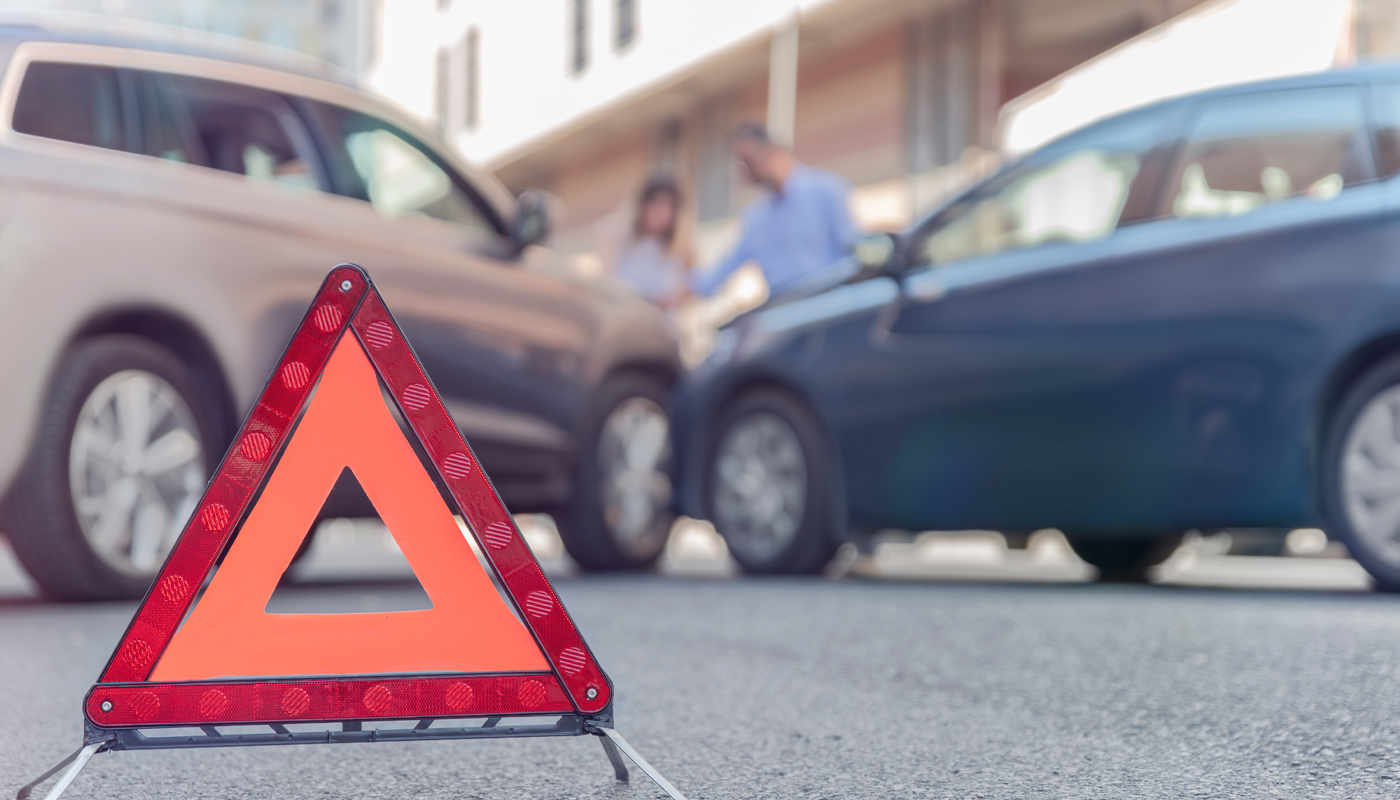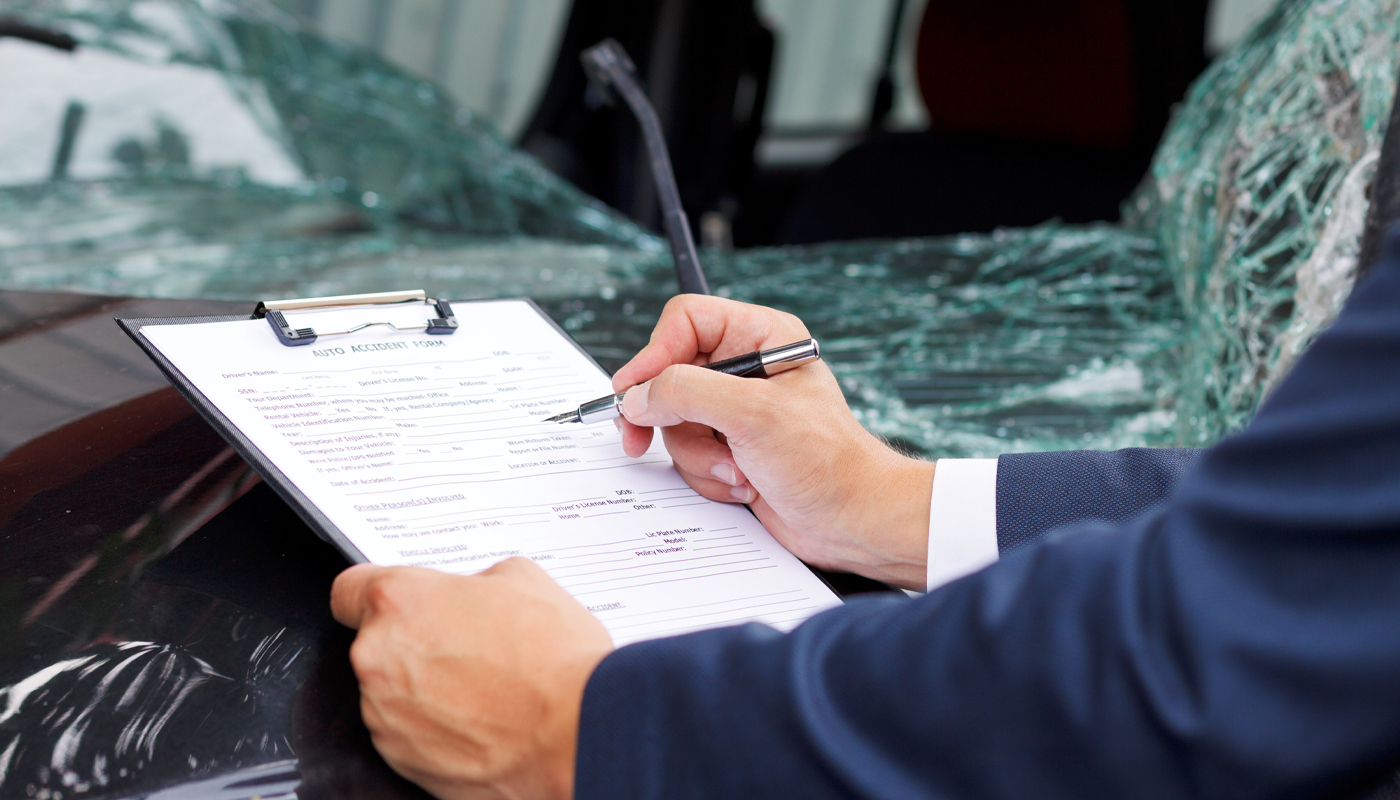Auto Insurance After a Crash
Does being involved in a car crash always lead to higher auto insurance?
 iStock
iStock
There were 290.8 million cars in the United States as of September 2022 and Americans drive a total of 3.2 trillion miles each year, so no one should be surprised by the millions of crashes that occur annually on U.S. roadways. According to the National Highway Traffic Safety Administration (NHTSA), an estimated 5.25 million motor vehicle crashes were reported in 2020 (download the report here). That works out to a daily average of more than 14,300 crashes.
So, whether you’re a novice driver or you have years of driving experience, it makes sense to know what to do if you’re involved in a car crash—and how it can impact your auto insurance rates.
A crash by any other name
You’ve probably heard people refer to everything from a fender-bender to a serious collision as an accident. Law enforcement and auto insurance companies usually try to avoid using the word when referring to car crashes because it implies that no one in particular is at fault. In reality, car crashes where no one is at fault are rare; most occur because a motorist did something (or did not do something they should’ve done) to cause it.
Risky business—common causes of crashes
A good first step toward avoiding crashes is learning about what causes them. Crashes caused by human error can usually be attributed to one of the following behaviors:
- Speeding. Exceeding the posted speed limit is one form of excessive speed that can lead to a crash. Another is driving within the speed limit but faster than is safe when there are dangerous road conditions like bad weather. In 2021 an estimated 10% of all police-reported traffic crashes were related to speeding (download the report here).
- Driving while impaired. Alcohol receives the most attention, but it’s not the only source of impaired driving. Prescription and nonprescription medications—especially when combined—can affect a driver’s judgement and reflexes unexpectedly.
- Being inattentive. Texting, eating and talking on the phone or to passengers in the back seat while driving are all examples of distracted driving. A recent NHTSA report showed distracted driving caused 13% of all police-reported traffic crashes in 2021 (download the report here).
- Driving in bad weather. According to the Federal Highway Administration, 21% of annual motor vehicle crashes are caused by adverse weather conditions or driving on slick (e.g., wet, snowy, slushy, icy) pavement. Bad weather, including rain, snow, ice and fog, can affect your car’s handling and impair your ability to see the roads clearly. Just remember, it’s a driver’s responsibility to compensate (or to know when to stay off the road entirely).
- Aggressive driving. Any unsafe driving behavior, performed deliberately and with ill intention or disregard for safety, can be labeled aggressive driving. Examples include following another car too closely (rear-end collisions account for 28% of all crashes), running red lights, and blocking cars that are attempting to pass or change lanes.
- Drowsy driving. Drivers’ reaction times, awareness of hazards and ability to sustain attention all get worse as drowsiness increases. The National Safety Council found that driving after more than 20 hours without sleep is equal to driving with a blood-alcohol concentration of 0.08%—which is the legal limit in the U.S.
 iStock
iStock
Immediately after a crash
Despite your best efforts, there may come a time when you’re involved in a car crash. A driver is responsible for knowing what to do after a crash, so follow these steps—you’ll not only help keep everyone involved safe, but you’ll also be giving yourself a leg up when authorities write their report and your insurance company reviews your claim.
1. Remain calm. Adrenaline may heighten your emotions, making you become aggressive or agitated. If you’re not in immediate danger, take a moment to collect yourself. Once you have a clear head, it will be easier to remember the things you need to do next.
2. Assist the injured. If your crash involves another vehicle or pedestrians, or if you have passengers in your car, check on those people to see if they are injured. If anyone needs medical attention, call 911 immediately.
3. Remain at the scene. Before taking time to exchange information, get to a safe place. If you’re able to do so, move your vehicle off the road, turn on your hazard lights and set out warning flares or reflective triangles. Don’t leave the scene of the crash until after you’ve been given permission to do so by authorities. If another driver involved in the crash flees, follow this advice.
4. Notify the police and submit a report. The law requires you to notify the police. The more serious the crash, the more important it is to have authorities there in person to review what happened. If the police don’t come to the scene, file an incident report at a police station or with another law enforcement agency as soon as possible. Having a police report on file may help later if you need to file a liability claim.
5. Document the scene and gather information. Exchanging information with everyone involved, including witnesses, will help your insurance claim process go as smoothly as possible. Take photos of the location, the people involved and the damaged vehicles, and use your phone’s camera or a pen and paper to document:
- Names
- Addresses/email addresses
- Vehicle identification numbers (VINs)/license plate numbers
- Driver’s license numbers
- Insurance carriers and policy numbers
6. Contact your insurance provider. The sooner you make your insurer aware of the incident, the sooner they can start the claim process. Many insurance companies have staff available 24/7 and can assist immediately.
 iStock
iStock
Who is at fault (and why it matters)
A police officer’s report of the crash will include important details related to the incident and statements from those involved. Never allow yourself to be pressured into admitting fault or giving an opinion about the cause of the crash. If you are not comfortable discussing what happened, you can talk with an attorney before giving a statement.
Your auto insurance company will rely heavily on the details of the police report that’s filed, particularly if it indicates one driver bears most or all of the fault. In most cases, the driver who’s found at fault for the crash will see their auto insurance premium increase, a practice known as surcharging. If you are that driver, this additional charge will appear on your billing statement when you renew your policy. Keep in mind that in addition to receiving a surcharge, you will probably also lose any collision-free, claims-free or good-driver policy discount when you renew your insurance, resulting in even higher insurance costs.
If the crash wasn’t your fault, there’s a possibility you may not see a rate increase at all, but this will depend on your insurance provider and the state you live in. That’s because some states, including Arizona, New York and Ohio, do not allow insurance companies to surcharge policyholders for incidents they did not cause. The best way to learn whether you could see a rate increase even if you are not at fault is to ask your insurance agent or consult your insurance policy. If you live in a state where insurance companies are allowed to surcharge drivers who are not at fault, you may see a smaller rate increase than if you were responsible for the crash.
Insurance rate increases after a crash
Insurance companies consider a number of factors when determining your auto insurance rates, including your driving history and driving habits, the car you own, and the type and amount of auto insurance coverage you have. All these things are used to decide how risky it is to insure you. It’s worth remembering that crashes are not the only events to show up on your driving record. Some traffic violations, such as a drunk-driving incident, may be serious enough to trigger a nonrenewal—a situation where your auto insurance company chooses not to renew your policy at the end of its term. When you shop for coverage after such an incident, any companies providing insurance quotes will see the event when they check your claims history and driving record.
Once an incident that affects your auto insurance rates appears on your driving record, you can expect it to remain a factor in calculating your insurance costs for at least three years, depending on your insurance company, your state’s regulations, and the nature and severity of the event. Some companies will consider violations going back five years or more.
See what steps you can take to help counter the rising costs of auto insurance.
Learn More >> iStock
iStock
Ways to reduce auto insurance premiums
Having a crash on your driving record for three to five years can be tough, but there are things you can do to help offset the surcharge:
- Set a higher deductible. A higher deductible will usually result in lower premiums. But talk with your agent to see what works for you, because you’ll be responsible for paying the deductible if you make a claim.
- Get a car with safety and security features. Crash-prevention technology and antitheft and engine cutoff systems reduce the risk of crashes and theft, and they may also qualify you for insurance discounts.
- Avoid filing small claims. When your claim is only marginally higher than your deductible, it may make sense to pay for it out of pocket instead of submitting the claim, which could end up raising your rates.
- Take advantage of all discounts. You can often get discounts by paying for the policy in full upfront, signing up for automatic billing, and bundling multiple policies with the same insurance company. Bundling may also allow you to pay a single deductible when you have a claim from an event (such as a storm) that affects both your home and car.
Five types of protection
- Collision coverage helps with repairs if you collide with another vehicle (regardless of who is at fault) or an object (such as a pole, guardrail or a tree).
- Comprehensive coverage is for repairs when the damage results from something other than a crash (like theft, vandalism or fire).
- Liability insurance, required by law in nearly every state, will pay for bodily injury and property damage for which any covered individual is legally responsible.
- An umbrella policy covers liability damages starting at the auto policy’s maximum and extending to an amount far higher. Umbrella policies often have maximums exceeding $1 million.
- GAP stands for guaranteed asset protection, and it helps people who are “upside down” with their auto loan—that is, they owe more on their car than it’s worth. If, for example, the car is totaled in a crash or stolen and not recovered, GAP would cover the difference between the amount you owe on your car and the actual cash value of the vehicle.
For more information about these and other types of auto insurance policies that may be available to you, schedule a meeting with your agent.
Coverage is subject to all policy terms, conditions, exclusions and limitations. Subject to underwriting eligibility requirements. Insurance underwritten by one of the following companies: Auto Club Insurance Association, MemberSelect Insurance Company, Auto Club Group Insurance Company, Auto Club Property-Casualty Insurance Company, Auto Club South Insurance Company, Auto Club Insurance Company of Florida, The Members Insurance Company, Universal Insurance Company, CSAA Insurance Group, a AAA Insurer or non-affiliated insurance companies.